Since 2019 when the Bluetooth Special Interest Group announced a direction-finding feature based on angles finding in their specification for Bluetooth 5.1 I was impatient to check if it is working!
Unfortunately, there is no mutch commercial DevKits or solutions to verify that feature, nevertheless, luckily now one of our engineers Arkadiusz Jagodzinski has prepared a custom HW solution based on the Nordic nRF52811 chip and verify how this feature works and how accurate it is based on measurements in special EM isolated chamber. In this first post I’d like to share with you
Bluetooth Low Energy Location Services
Bluetooth Low Energy is one of the most popular wireless technology standards. Around 4 billion Bluetooth enabled devices were shipped to the market in 2020. This number will grow and annual Bluetooth device shipments will exceed 6 billion by 2025 according to Bluetooth SIG forecast.
One of the Bluetooth key features is location services. 119 Million devices that use location services were shipped in 2020, mostly for Indoor Navigation and Point of Interest Information purposes.
Until now Bluetooth location services solutions were using Received Signal Strength Indicator. RSSI measurements allow determining the presence of a device or rough distance estimation to it.
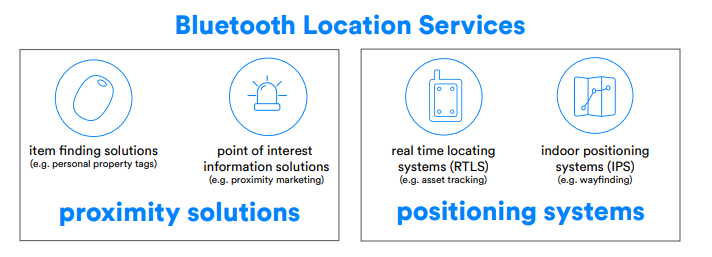
By using some more sophisticated approaches Real-time Locating Systems and Indoor Positioning Systems are also possible by mixing together RSSI measurements, multiple transmitters or receivers and trilateration.
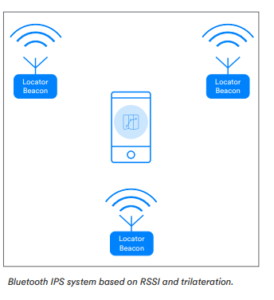
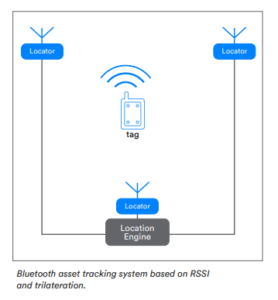
Source: Enhancing Bluetooth Location Services with Direction Finding, bluetooth.com
Bluetooth Direction Finding
In 2019 Bluetooth SIG announced Bluetooth 5.1 specification which introduces Direction
Finding features designed to improve location services. Direction Finding makes it possible to determine the direction of the received signal by using an antenna array and signal-phase comparisons.
Direction finding delivers two methods: Angle of Arrival (AoA) and Angle of Departure (AoD) which use the same principles.
In both methods, there are two devices: transmitter and receiver. The transmitter transmits Constant Tone Extension (CTE) signal after the regular BLE packet. The receiver role is to sample that signal and calculate the angle from which the signal comes.
In Angle of Arrival:
- The transmitter has one antenna.
- The receiver has an antenna array and it switches antennas when receiving CTE signal from the transmitter.
The angle of Departure is slightly different:
- Transmitter has an antenna array and it does the switching when transmitting.
- The receiver has only one antenna used to sample CTE signal from the transmitter.
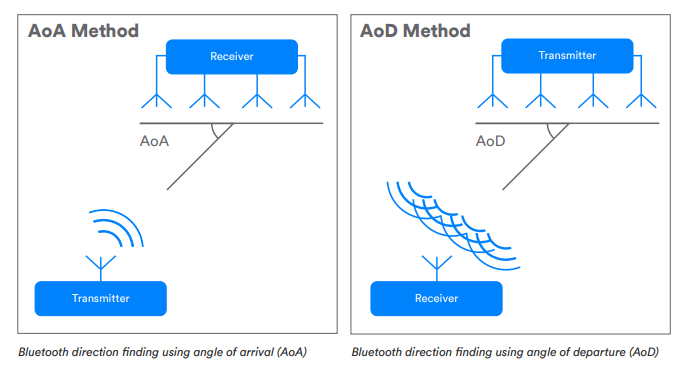
Angle Estimation
After the sampling phase, we have IQ samples linked to each antenna. IQ samples represent the phase and amplitude of a signal. Using this data it is possible to calculate the signal phase difference between each antenna. Then using some trigonometry it is possible to calculate the angle of arrival.
Example angle of arrival estimation using two antennas in the receiver:
Using phase difference to derive angle of arrival
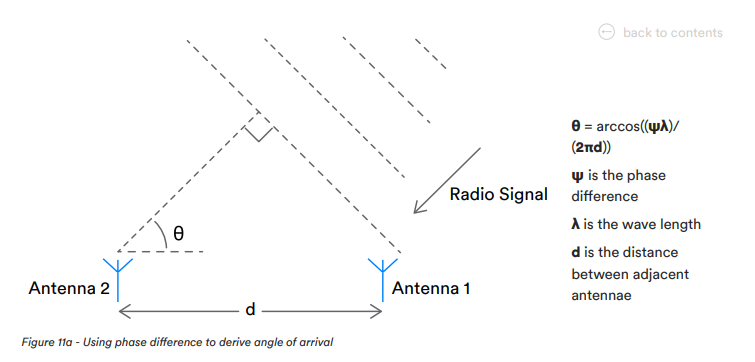
Source: Bluetooth Direction Finding A Technical Overview, Martin Woolley, 22 February 2021
Exploring Angle of Arrival method
In cooperation with Wrocław University of Science and Technology we will explore Angle of Arrival capabilities, mainly we will focus on examining the accuracy of:
- Estimation of the angle of the transmitter to the receiver.
- Transmitter positioning in 2D when using two receivers.
To do it we will use custom boards with Nordic nRF52811 chip and a uniform circular antenna array that can contain up to 8 antennas.
Sources:
- 2021 Market Update, Bluetooth SIG
https://www.bluetooth.com/wp-content/uploads/2021/01/2021-Bluetooth_Market_Update.pdf - Enhancing Bluetooth Location Services with Direction Finding, bluetooth.com
- Bluetooth Direction Finding A Technical Overview, Martin Woolley, 22 February 2021
https://www.bluetooth.com/wp-content/uploads/Files/developer/1903_RDF_Technical_Overview_FINAL.pdf












